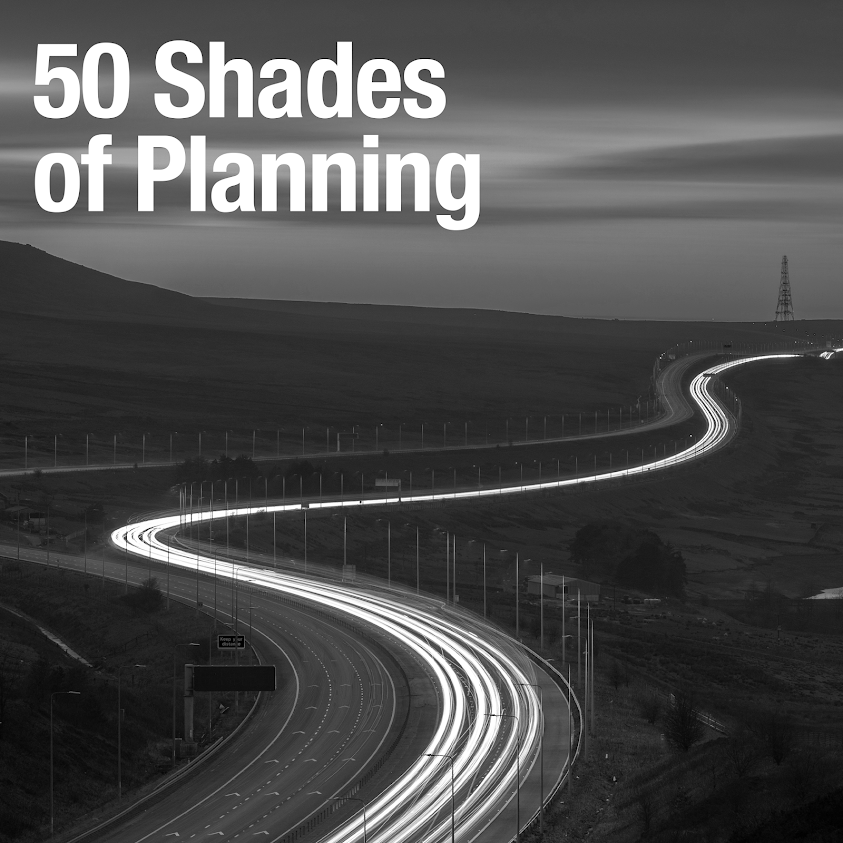I have not
seen Titanic all of the way through. I recall watching until the ship
left harbour, but then forwarded it until the iceberg appeared on the
horizon. Hopefully that reveals simply an inability to sit through Kate
Winslet films rather than a latent sadistic streak (let's leave that
for now...), but it did come to mind this morning as I
contemplated the news this week that the Inspector examining the
Cheshire East Local Plan has requested a not inconsiderable amount of further information from the Council prior to this month's pre-Examination meeting.
The Local Plan, and the separate but integral question of the five year housing land supply, has twisted and turned over the past eighteen months or so, during which time two diametrically opposite views on its soundness have emerged. On one side, the development community has expressed serious doubts about the soundness of the plan (see the letter from Gladman dated 4 June 2014 here). On the other side, the Leader of Cheshire East Council, Michael Jones, has said that the Local Plan is "one of the best in the country".
Ultimately though only one view matters and that is the view of Mr S Pratt, the Inspector appointed to examine the plan, and those who have been following the perfect storm that has been brewing during the Local Plan process have known that, like the iceberg in the Titanic (to mix metaphors), the Inspector's view was coming and, also like the iceberg in the Titanic, that it's arrival would probably be compelling viewing.
So now that the iceberg has finally arrived has it fatally holed the RMS Local Plan below the waterline?
A recap. For a Local Plan to be found sound the NPPF requires it to be:
The Local Plan, and the separate but integral question of the five year housing land supply, has twisted and turned over the past eighteen months or so, during which time two diametrically opposite views on its soundness have emerged. On one side, the development community has expressed serious doubts about the soundness of the plan (see the letter from Gladman dated 4 June 2014 here). On the other side, the Leader of Cheshire East Council, Michael Jones, has said that the Local Plan is "one of the best in the country".
Ultimately though only one view matters and that is the view of Mr S Pratt, the Inspector appointed to examine the plan, and those who have been following the perfect storm that has been brewing during the Local Plan process have known that, like the iceberg in the Titanic (to mix metaphors), the Inspector's view was coming and, also like the iceberg in the Titanic, that it's arrival would probably be compelling viewing.
So now that the iceberg has finally arrived has it fatally holed the RMS Local Plan below the waterline?
A recap. For a Local Plan to be found sound the NPPF requires it to be:
- Positively prepared – the plan should be prepared based on a strategy which seeks to meet objectively assessed development and infrastructure requirements, including unmet requirements from neighbouring authorities where it is reasonable to do so and consistent with achieving sustainable development;
- Justified – the plan should be the most appropriate strategy, when considered against the reasonable alternatives, based on proportionate evidence;
- Effective – the plan should be deliverable over its period and based on effective joint working on cross-boundary strategic priorities; and
- Consistent with national policy – the plan should enable the delivery of sustainable development in accordance with the policies in the Framework.
The additional information requested by Mr Pratt relates to:
- How much of the 353ha. of employment land will be allocated for each business use/economic sector and how it will create 20,000 new jobs;
- The basis on which the objective assessment of housing need was established;
- How the plan addresses previous shortfalls in housing provision;
- Why the housing requirement will support 13,900 new jobs, not 20,000, and will not meet identified affordable needs;
- The justification for the proposed settlement hierarchy and the amount of development being directed to each;
- Why certain sites are proposed for release from the Green Belt;
- The definition of 'strategic' sites and locations, and the justification for selecting preferred sites and discounting non-preferred sites; and
- The plan's accordance with recent Planning Practice Guidance.
There
are some pretty fundamental issues here that, one suspects, will require at the very least some further work to justify the Council's position. I wrote a little while
ago that "there
has to be a more than distinct possibility that the examination
inspector will
recommend that the Local Plan will be, at best, delayed and,
at worst, withdrawn." Certainly
if the Council cannot clarify these matters to the Inspector's
satisfaction at the pre-Examination meeting it is difficultly to see how
the Local Plan can be positively prepared, justified,
effective and consistent with national policy, and, as consequence, how
it can proceed to examination in it's current form.
The Local Plan might not then be holed below the waterline, but it appears to be listing badly...

Comments
Post a Comment